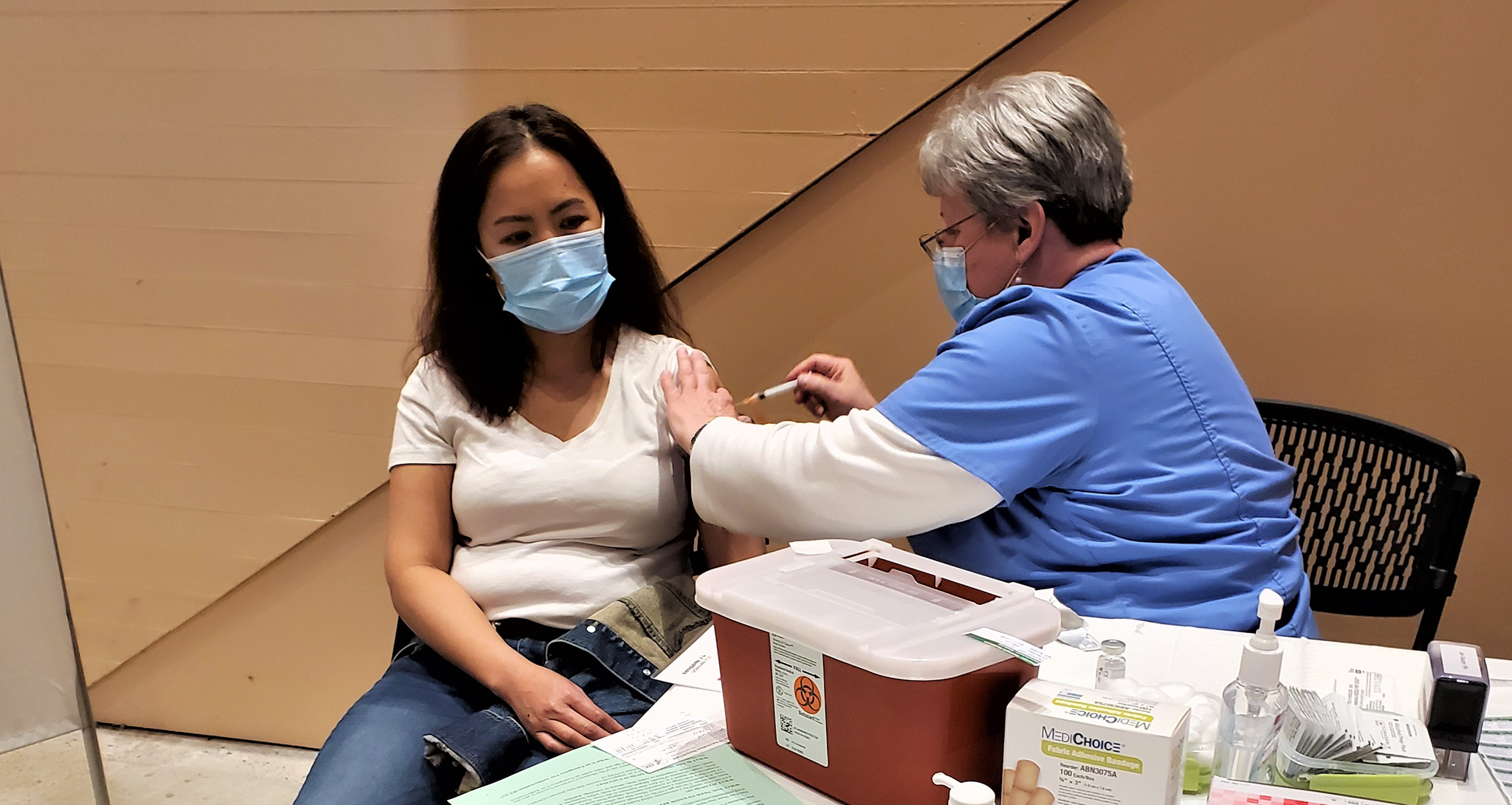

One day in December 2020, Meg Schrafft, community health specialist, woke up to an email saying that she was being deployed to COVID-19 work. Leadership didn’t know exactly what she would be doing but knew that her skills and expertise were needed. Many people turned to the county as a trusted source for information, but there wasn’t a system in place to handle all the requests. Meg and a colleague, Gretchen Garman, got assigned to answer the nearly 500 COVID-19 emails the health department was receiving each day.
While they were certainly making an impact helping people get information and get access to vaccines, nagging questions kept coming up. Who are we missing by only providing information via email? How are we able to assist residents who don’t have internet or who don’t speak English?
For Meg, those questions were personal. She had grandparents who emigrated to Minnesota and did not speak English. They also didn’t have the computer literacy to register for vaccines online. Meg was glad she was able to help her grandparents navigate that process but saddened to think about the people who didn’t know where to turn to for help.
Department leadership shared these concerns and a commitment to find answers for people with as few transfers and handoffs as possible. It became clear that the department needed to marshal the resources for a new solution.
Implementing the navigation center phone line was important accessibility improvement undertaken by the county and a way of demonstrating Hennepin County Public Health’s commitment to equity in the vaccine response.
The Hennepin County COVID-19 Navigation Line was established out of necessity to connect with and better serve more residents, especially those with limited English skills. The navigation line launched in April 2021 as a monitored voicemail box - people could call and leave a message, and staff would call them back later.
As the call volume and question complexity increased, staff advocated for turning it into a live answer service in multiple languages – English, Spanish, Somali and Hmong. At its peak call volume the team expanded to 10 employees. It is now a web-based portal that automatically distributes phone calls to available staff. Since April 2021, the navigation team has assisted with more than 10,000 calls.
Implementing the navigation center phone line was an important accessibility improvement undertaken by the county and a way of demonstrating Hennepin County Public Health’s commitment to equity in the vaccine response.

At first, Meg estimates about 90% of calls were asking for help to make vaccine appointments. For Meg, helping people find vaccines when they were first available was an emotional experience. She says, “The vaccine was seen as a magic fix to get back to the way world had been, especially to the elderly and immunocompromised who were constantly told they were going to die.”
In addition to helping individuals get their COVID-19 questions answered, the navigation center line had several unexpected benefits.
For example, the navigation center staff were able to provide valuable information to the COVID-19 response that informed strategy. This frontline, real time “intel” was especially helpful to the communications team. Navigation center staff would relay the questions they were hearing. The communications team would take that information and use it to develop talking points, key messages, and even social media posts.
Although they were now helping many more residents access vaccines with the navigation center, they were still facing challenges meeting some needs. A substantial portion of the calls were from residents who were homebound and looking for someone to deliver vaccines at their home. Unfortunately, Hennepin County wasn’t able to provide homebound vaccines, however, Meg and her team were still able to help. They developed a script to steer people to the Minnesota Department of Health. They would also help connect residents to other services like primary care or other providers.

Meg notes that handling complex and emotional issues was taxing. It was important for them to set boundaries, and emotionally regulate to make sure they could continue providing services. She set up bi-weekly check-ins with her team and implemented a public health practice called “reflective supervision.” This is a best practice in which the supervisor helps a staff person process through a difficult call or experience to gain learning, process emotions and seek closure. This helped them work through some of the challenges as a team.
By supporting staff’s mental and emotional capacity, they are better able to continue to bring their best selves to this challenging work. In doing so, Meg hoped to ensure that residents felt respected and increase their trust in the county. “A lot of times, people’s perception of the county is not about the experience of getting services,” she says, “it’s about the emotional charge or connection when getting them. We cannot pretend that working with the government is an emotionless experience, and we need to deliver services in a way that acknowledges that.”
Meg also expressed how grateful she was for her staff showing up every day to talk with residents and find solutions to problems that were not always straightforward.
A personal highlight for Meg was the relationships she built. Her work at the navigation center required her to talk with colleagues every day. She loved the experience of meeting and working with people from across the county she would have never met had she not been deployed.
Meg also learned to be adaptable and resilient. “Now I have the opposite of imposter syndrome. People are doing the best they can with information they have, and that’s okay. As a chronic overachiever that was hard to learn. But the navigation center is still alive and thriving, which is a testament to doing your best.”

Meg Schrafft, community health specialist
If you have questions about COVID-19 or getting a vaccine appointment in Hennepin County, help is available in English, Spanish, Hmong and Somali by calling 612-348-8900.
Written by: Bo Lopez